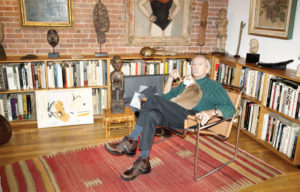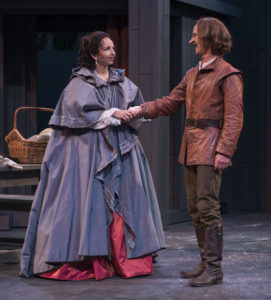In this week’s “Sightings” column, which appeas in the online edition of today’s Wall Street Journal, I take a look at Edward Albee’s art collection, which is being auctioned off next week. Here’s an excerpt.
* * *
If art is important to you, then you’ll probably have succumbed at one time or another to the comforting illusion that good taste is a virtue. No such luck. Not only has it been proved that listening to Mozart doesn’t really make you smarter, but the history books are full of bad men to whom the fine arts were vitally important (Adolf Hitler loved the operas of Wagner) and great ones to whom they meant nothing (Franklin Roosevelt’s favorite song was “Home on the Range”).
In fact, genuine aesthetic taste isn’t a proxy for anything else, virtue least of all. In part it’s an expression of personality, but not a simple or obvious one, and it has a way of popping up in unexpected places. I recently read an airline-magazine interview with George W. Bush, who became an amateur artist after leaving the White House and who recently published “Portraits of Courage,” a folio of his paintings of U.S. veterans. “Now that you paint—and go to museums—who are you in awe of?” the interviewer asked. He immediately cited four modern artists, Lucian Freud, Edward Hopper, David Hockney and Fairfield Porter. Nobody focus-grouped that reply…
 A few days after I read that interview, Sotheby’s announced that it is auctioning off a hundred-odd pieces from the art collection of Edward Albee. Unlike President Bush, the author of “Who’s Afraid of Virginia Woolf?” was well known for his love of modern art, and his success as a playwright allowed him to do something about it. Mr. Albee’s collection, which is currently on view in Manhattan and goes on the block Sept. 26, is expected to bring in between $8 million and $12 million, all of which will benefit the Edward F. Albee Foundation, which funds residencies for artists and writers. That’s a tidy sum for a man who wrote plays in which the American dream is portrayed as a snare and a delusion.
A few days after I read that interview, Sotheby’s announced that it is auctioning off a hundred-odd pieces from the art collection of Edward Albee. Unlike President Bush, the author of “Who’s Afraid of Virginia Woolf?” was well known for his love of modern art, and his success as a playwright allowed him to do something about it. Mr. Albee’s collection, which is currently on view in Manhattan and goes on the block Sept. 26, is expected to bring in between $8 million and $12 million, all of which will benefit the Edward F. Albee Foundation, which funds residencies for artists and writers. That’s a tidy sum for a man who wrote plays in which the American dream is portrayed as a snare and a delusion.
I’m not here, however, to tease Mr. Albee’s ghost (well, maybe just a little). I’m more interested in this question: What, if anything, can we learn about him from the art that he hung on his walls?…
One thing that’s clear is that the collection, like President Bush’s top-four list, reflects its owner’s taste, not that of a high-priced art consultant. Rather than “buying signatures” or hewing to the dictates of fashion, Mr. Albee collected artists who were respected but comparatively little known to the public at large….
* * *
Read the whole thing here.

 CLOSING SOON IN SPRING GREEN, WISCONSIN:
CLOSING SOON IN SPRING GREEN, WISCONSIN: